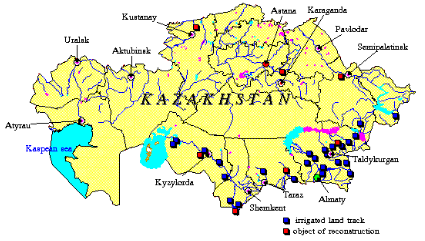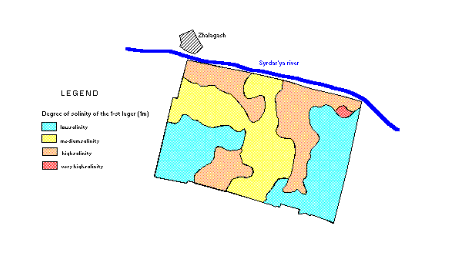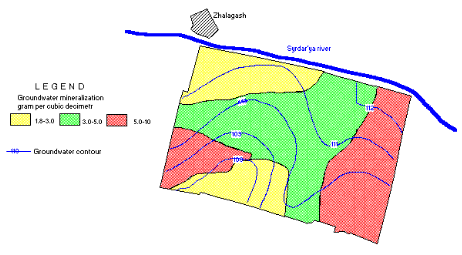Ilan Shakibaev, |
||||
| AMELIORATION SERVICE UNDER THE MINISTRY OF AGRICULTURE REPUBLIC OF KAZAKHSTAN | ||||
| The
irrigated areas in Kazakhstan occupy the territory of 2.3 million hectares, 1.6 million
hectares out of this number are arranged in the southern regions of the country. They are
the lands on which over 30% of all crops are cultivated. Kazakhstan, because of the
natural and climatic conditions, is the zone of risk farming; thus, irrigation plays a
significant role. The immensity on one side and low quality on the other side of the irrigation systems constructed during the soviet time, transition to the market economy, land privatization, establishment of a new form in the stead of former ownership --all caused the defection of the water management structure, cut down the cultivated areas, caused quality degradation and productivity decline of irrigated lands. The above-mentioned events also "contributed" to the intense salinity processes, erosion, and the worsening of the environmental situation on these territories. In recent years, due to these reasons, south regions have been using only 1.2 million hectares out of the total land irrigation fund, and there is a tendency of the saline lands to increase from 8 to 13 percent. |
||||
| Irrigated land track location scheme | The Aral Sea tragedy is directly tied with water diversion from the Syr Darya. Kazakhstan alone takes 6 km3 of water for the irrigation of 777 thousand hectares of lands in South Kazakhstan oblast and Kyzyl Orda oblast. Because of uncontrolled use of water and land resources, during the last score of years the Aral Sea basin turned to the ecological disaster zone. The tense environmental situation on the irrigated lands is being developed also in the basins of Balkhash Lake, the Irtysh and Ili rivers. | |||
 |
||||
The governmental control over the status and use of irrigated lands in
Kazakhstan, surface and ground water monitoring has been established by the amelioration
Service, which contains three regional expeditions: Jetysu (the head expedition), South
Kazakhstan and Kyzyl Orda expeditions. The monitoring is used:
|
||||

